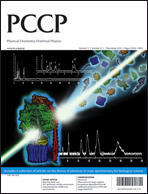Mass-spectrometric and computational study of tryptophan radicals (Trp + H)˙ produced by collisional electron transfer to protonated tryptophan in the gas phase†
Abstract

- This article is part of the themed collection: Advances in mass spectrometry for biological science

 Please wait while we load your content...
Please wait while we load your content...